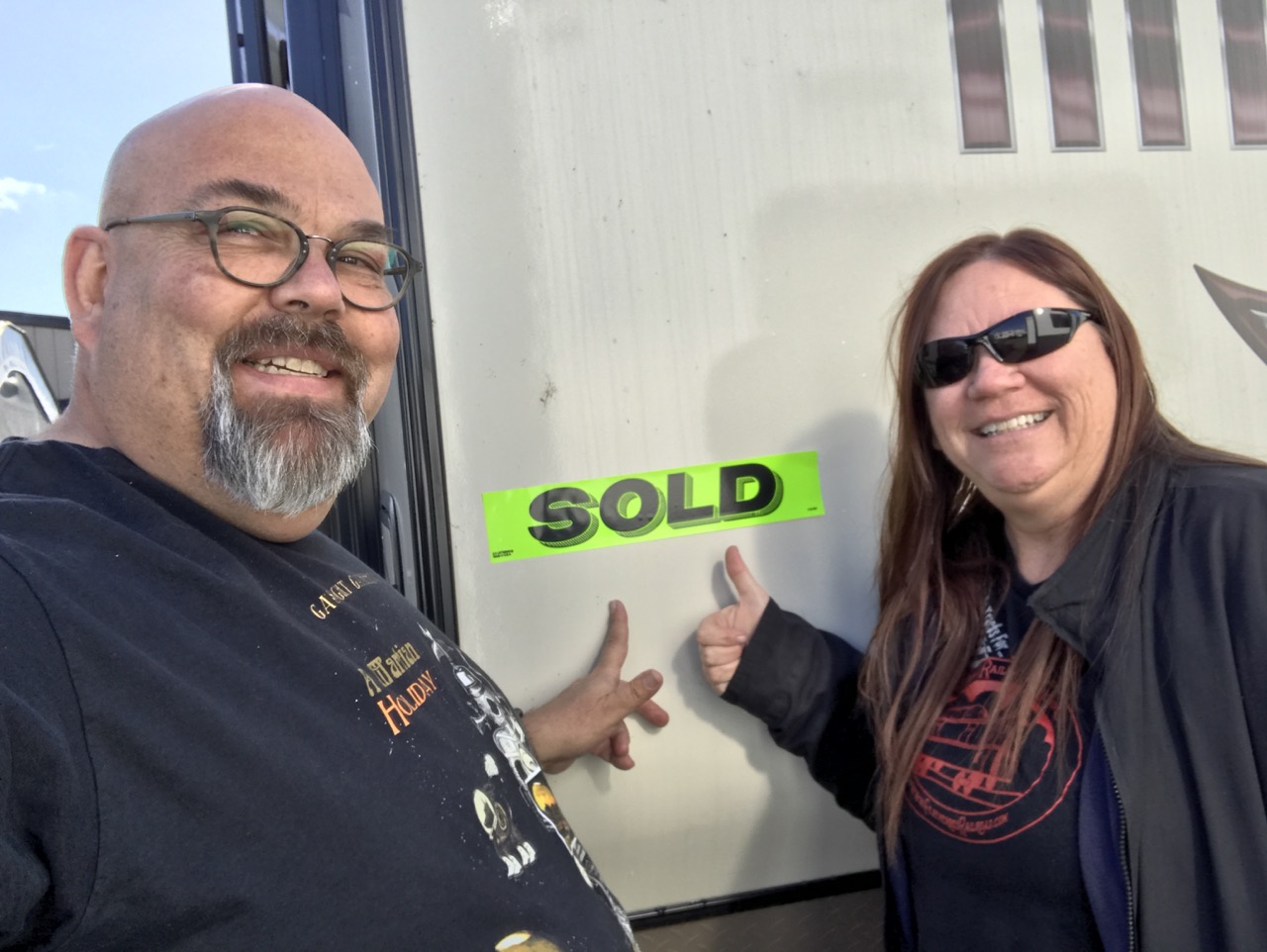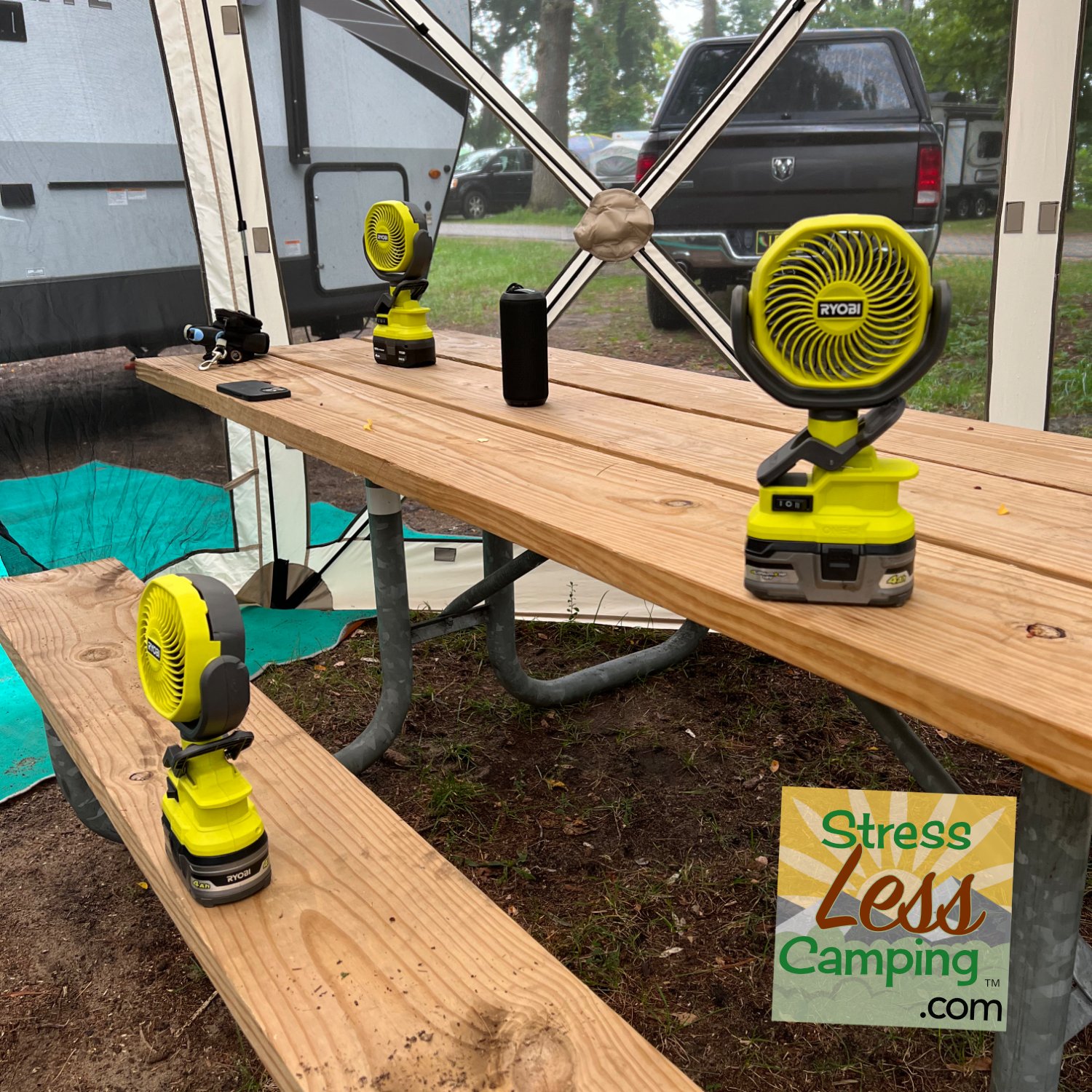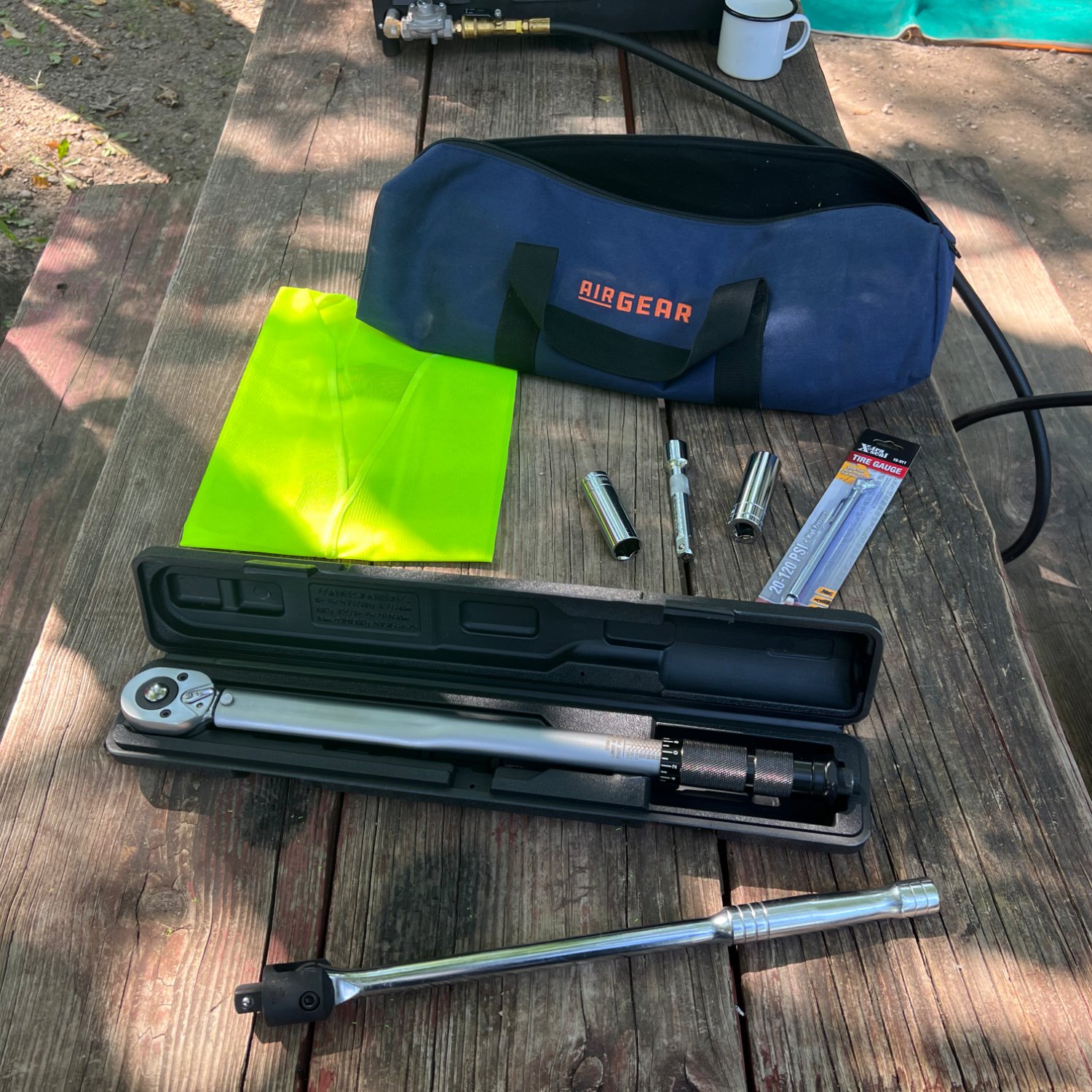How do you mount Starlink on your RV to get the best performance?
What’s the best way to mount Starlink on your RV?
How do you mount your Starlink Internet on your RV? What’s the best method to mount Starlink to maximize performance while making it easy to use? These are the questions I see all the time on social media and I think I have come up with a great idea.
The Starlink Dishy on my Camco flag pole mount held up by the tongue jack on our RV
Mounting your Starlink on your RV
There are so many ways to mount your Starlink dish on your RV and even more places to mount the router inside. But I have a suggestion. Don’t mount your Starlink dish in a permanent spot.
Instead I’d like to advocate for a flexible solution where you can put the outside dish in places to accommodate various circumstances you might find yourself camping. This has worked very well for us.
We find ourselves camping in developed campgrounds, state parks and even totally off the grid sometimes. The sites where we camp range from wide-open spots to places with a lot of obstacles. Like trees. Boo.
So let me tell you what has worked very well for us. But first…
What is Starlink?
From the company’s website, Starlink is the world's first and largest satellite constellation using a low Earth orbit to deliver broadband internet capable of supporting streaming, online gaming, video calls and more.
Leveraging advanced satellites and user hardware coupled with our deep experience with both spacecraft and on-orbit operations, Starlink delivers high-speed, low-latency internet to users all over the world.
Essentially Starlink is a game changer as it enables you to get potentially very fast and stable Internet connectivity even where there are few, if any, other choices. While it is a satellite-based network it can be vastly superior to many of the satellite choices we have had in the past.
Part of the reason for this is that Starlink’s satellites fly at a relatively low orbit, about 342 miles above the Earth. They fly in groups, or constellations, and there are a lot of them with more coming all the time. The service continually improves.
But it also can be choked by trees, tall buildings, tall RVs and even other users. Like many systems the more people in a given area using Starlink the more challenged it can be to get a fast connection. It’s the old water hose analogy - you can push a lot of water through a hose but the more people wanting a drink, the less performance they each realize. Get enough customers for your water hose, or for Starlink, and each one gets close to nothing.
This is why some places show no availability if you choose a residential plan. Starlink feels like there are enough customers for the available service in the area.
How does Starlink work for RVers?
Because Starlink is a low-Earth orbit system it actually can be very fast. Further, if you can get a relatively clear view of the Northern sky, you could do very well.
I have found that the less densely populated areas have the best performance, typically. And Starlink can work exceptionally well even if there is zero cell phone coverage. There have been cases where I use the Starlink connectivity to enable my cell phones to work as my phones are set so they can work over Wifi or cellular.
We have now started using Campground Views to scope out campsites in advance to look for fewer trees or other obstructions. Since our Rockwood Mini Lite 2205s with the Power Package works very well in sunny conditions due to the solar and battery system, as does Starlink, we are not fond of finding places to camp with trees all over.
Where to put the Starlink Dishy
Since Starlink is a company founded by Elon Musk, things tend to have a silly names. So the Starlink satellite dish that you get is called Dishy. Seriously.
I advocate for being able to place Dishy to my advantage. There have been campsites where I put Dishy on the included ground mount and place it at the end of a campsite, depending on tree coverage.
If there are taller obstacles I mount it on the top of my Camco Flag pole. I used to use this flag pole for a WeBoost antenna and have repurposed it for Dishy.
As such I bought a mount for the top of the flag pole that the dish slots into from a seller on Etsy. This seller was outstanding to work with and I have been very pleased with the mount. He also has them for other brands of flag poles.
The reason I like this is that the flag pole sits in a ground mount. I can put the ground mount under a wheel of the trailer or under the tongue jack. Recently a campsite had so many trees I actually put it at the very front of the campsite under the wheel of my truck.
The flexibility enables me to optimize the placement of the outside dish to maximize performance and coverage.
Another thing I like about the Camco flag pole is that the various segments use a spring-loaded pin to stay up. I have heard of the twist lock style getting gummed up and failing and, since ol’ Dishy was $599, I don’t want it falling. To me simpler is always better.
The pole came with a zippered bag although the foot just tends to go wherever it’s convenient. Or inconvenient, on travel days.
Thus far it’s been in some pretty strong winds and hasn’t broken the pole so I’m pleased with the durability and performance. Raising it is a bit of a hassle as you have to get the pins in the holes on the pole, but there are some barely-visible arrows etched onto the pole to help with that. They mostly don’t.
Bringing the cable in
Starlink has the outside dish and then a router that goes inside. Since this is an Elon Musk product, the cable is a proprietary cable. Of course. And it ain’t cheap.
There are lots and lots of people smarter than I am who have made custom fittings and ends for their cable but I am not willing to cut the cable.
So I found a seller on Etsy who makes a fitting that enables me to pass the cable through a baggage door. I chose this location because that fitting comes with a slotted plug for the cable and one that’s closed when you don’t have the cable going through it.
The Starlink router inside the RV on my bedside table with cable run from the baggage compartment.
I ran the cable down from the night stand into the baggage compartment where it stays coiled-up. When it’s time to plug in to Dishy I remove the plug and run the cable through the hole in the baggage door and then feed enough cable to accommodate wherever Dishy is going to be.
Then I use the plastic nut and screw the fitting into the baggage door with the cable run through it. This is the same nut I use to secure the plug on travel days.
I also like that that expensive proprietary cable can stay coiled-up in the baggage compartment. I have been told that others have dropped ends of the cable on the ground and fouled-up the connectors. Bleh.
This “plug” for the baggage door and even the one where the cable runs through it seem to be weather-resistant. I have been in some serious rain and the baggage compartment has remained dry. That’s a good thing.
I was also told that the baggage doors were designed to get water in them and allow the water to run out of weep holes in the bottom of the doors.
Which Starlink plan is best for RVers?
Starlink has made more changes to plans and service than I can remember. Right now the cheapest way to get Starlink is if you can get a residential plan where you live (assuming you have an address and they have service in your area).
What we did is get the mobile plan. At the moment that costs us $150 a month but we can put it on hold when we’re not using it. Those months on hold cost nothing and the stop is prorated.
As for transporting the dish itself I just use the cardboard box it came in. You can get all sorts of transport packages out there if you want to spend a bunch of money but the box came with the system, which cost us $599, was included in that price and has seemed to hold up just fine.
The Starlink dish on the ground mount with a traffic cone so it doesn't get run over
More tips
Since I like that I can use Starlink’s own included ground mount where that’s appropriate I will add that I use a traffic cone I bought at the hardware store as I’ve seen photos of these dishes at campgrounds having been run over. That’s not a good thing.
I also know of people who like those ladder mounts but, having handled RV warranties, I don’t like using the ladder for anything other than climbing up and inspecting your roof. And, even then, I don’t like doing that.
There are also people who hack the dish, put it in buckets to point straight up and mount it on the roof of the RV. To me this limits you. I just like flexibility and being able to accommodate the system based on where I am camping and what’s around me.
Are you interested in Starlink?
You probably wouldn’t be here if you weren’t but we just got a discount code for a month’s free service (with normal activation) from Starlink. So, if you don’t have it already here’s a Starlink discount code for a month’s service included with activation.

























